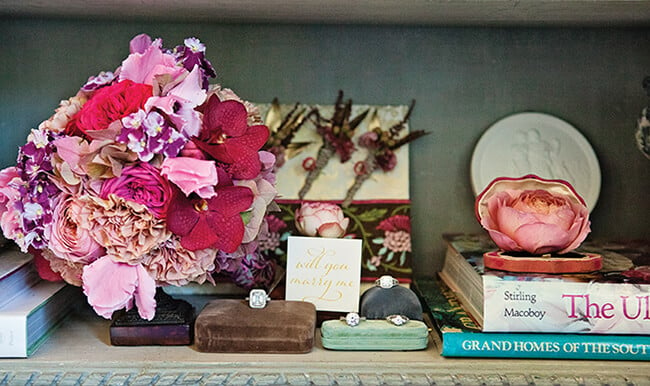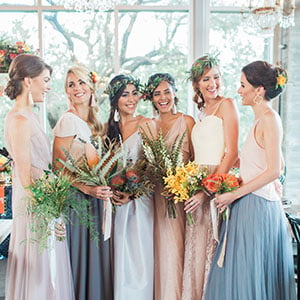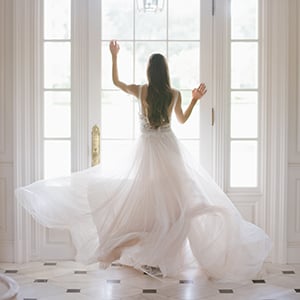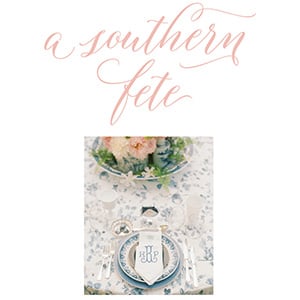4 Ring Buying Rules

Photo: Larry Fagala - Rings: Zadok Jewelers - Flowers: Todd Events
An engagement ring and wedding band are no mere pieces of jewelry. Each is a symbol of something much more precious than fine metals or rare gems: everlasting love. Which is why, for most couples, your wedding rings are almost certain to be the most important, and expensive, jewelry items you’ve ever purchased—and why choosing rings, whether you do it together or individually, can be fraught with intense pressure. The best way to alleviate this pressure, and ensure that your ring-buying experience is the most fun you’ll ever have shopping, is to do your research, know what you’re looking for (even if you allow yourself tons of room for design creativity), and have proof of your diamond’s pedigree. And that’s where we come in, with these essential ring-buying tips.
If you’re not going with him to choose, give him plenty of clues.
Selecting and purchasing a wedding ring is one area where even the most modern couples tend to follow tradition. This usually means that the groom ultimately will purchase the engagement ring all by himself, even if his future bride has been part of the pre-shopping process.
If you’re on the road to engagement, there are plenty of ways to let your guy know what you like, and what you don’t. You can point out rings and diamond cuts you like in store window displays (they don’t have to be engagement rings, just rings you’re fond of), comment on celebrity wedding ring styles you admire (understanding that your future fiancé might not be able to afford Kim K.’s $1.25-million dazzler, but, instead a slightly more modest version), and peruse the websites of jewelers (among the best serving Houston are Zadok Jewelers, Eklektic Jewelry Studio, Lewis Jewelers, and Diamond Cellar), together for ideas.
Of course, the best way to get the engagement ring of your dreams is to choose it together. He can always return to the jeweler to pick up the final piece, and surprise you by putting it on your finger.
Get loose…loose stones, that is.
When selecting an engagement ring, you’ll likely be selecting a loose diamond, then choosing a setting into which that sparkling stone will be dropped. Which means it pays to understand a bit about how diamonds are classified and graded. For any diamond you consider, make sure its “4 C’s”—carat, clarity, color, cut—have been assessed and documented by a qualified gemologist.
There are many organizations that provide this kind of documentation, and grades in these areas can vary widely from assessment to assessment. In the diamond world, it’s generally acknowledged that the Gemological Institute of America (GIA) is the top dog in gem certification. When selecting a diamond, ask your jeweler to see the GIA lab report on the stone of your choice, and feel confident knowing that all your diamond’s information is stored in the organization’s database. Because just like a diamond, a diamond’s lab report is forever.
Choose a ring that rolls with you.
Besides looking perfect, your ring has to fit you, and your lifestyle, perfectly.
For starters, make sure your ring fits well. Ring fittings should be scheduled when you are well rested (but
Also, while you may want to go for the biggest diamond and most spectacular ring you can afford—this is your engagement ring, after all—an excessively expensive ring might cause you concern: Are all the stones in place? Should I take it off before going anywhere or doing anything active? What if I lose it? What if it’s stolen? As a new bride, this should be the happiest time in your life. So choose a ring that won’t compromise that joy by burdening you with worry.
When choosing a ring, it’s also important to consider your daily activities and leisure-time hobbies. Do you like to garden? Are you an avid crafter or knitter? Do you play an instrument? All of these might factor into the style, shape
Band together, but let your individual styles shine. Your wedding bands, those precious rings you’ll exchange at the moment of “I do,” represent the bond between you. But they don’t need to match in order to show what a great match you two are.
If your groom digs sleek, matte titanium, and you’re a yellow-gold gal, pick bands in the metals each of you prefers. If his style is contemporary and cutting edge, and you have a passion for all things vintage, let him work with a jeweler to design a modern ring he’ll love to wear, while you scout estate sales, auctions and vintage-jewelry-sellers for the antique you seek, or freshen up your great-grandmother’s beloved ring. To bring your two bands into harmony with one another, and make them special to both of you, engrave the inside of the bands with a meaningful inscription—a loving phrase you both use, or the date of your wedding, perhaps.
Set your budget, and stick with it.
What you pay for your wedding rings is an investment, more than it is a mere price. Your diamond engagement ring and wedding bands are intended to last your entire lives together, and, in many cases, continue on as heirloom treasures for future generations to cherish. So paying more for your wedding jewelry than for any other piece of jewelry you’ve ever purchased is, for most couples, par for the course. That said, your diamond ring should not be your emergency financial relief fund (which would entail selling the ring), nor should it land you in deep debt just as you’re embarking on marriage, and everything that comes with it.
While the amount you spend on your rings will depend on what you can afford—meaning how much you earn and how much you’re able to save for rings—it should also reflect the value of the rings. So settle on a budget that may stretch you a bit (perhaps your groom has to forgo that coveted motorcycle for another year or two, for instance), but won’t break your bank, and within that budget, select for the highest quality, craftsmanship and, yes, sparkle, you can get.




